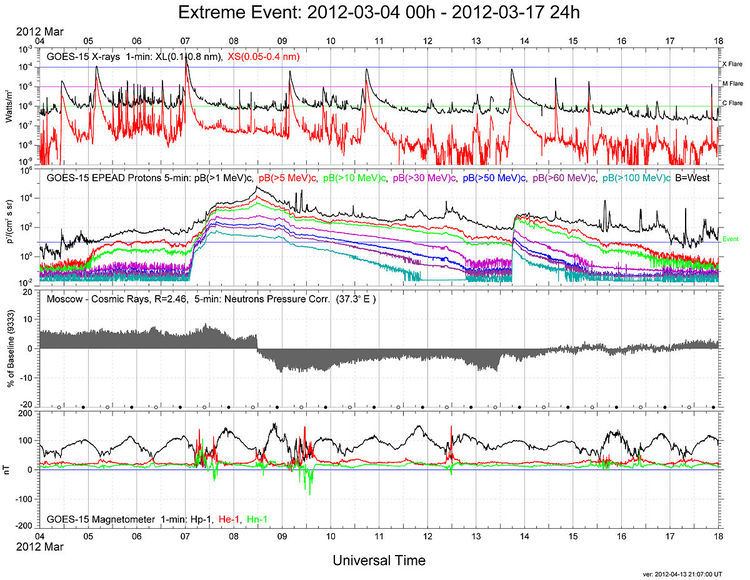 | ||
A Forbush decrease is a rapid decrease in the observed galactic cosmic ray intensity following a coronal mass ejection (CME). It occurs due to the magnetic field of the plasma solar wind sweeping some of the galactic cosmic rays away from Earth. The term Forbush decrease was named after the American physicist Scott E. Forbush, who studied cosmic rays in the 1930s and 1940s.
Contents
Observation
The Forbush decrease is usually observable by particle detectors on Earth within a few days after the CME, and the decrease takes place over the course of a few hours. Over the following several days, the solar cosmic ray intensity returns to normal. Forbush decreases have also been observed by humans on Mir and the International Space Station (ISS), and by instruments onboard Pioneer 10 and 11 and Voyager 1 and 2, even past the orbit of Neptune.
The magnitude of a Forbush decrease depends on three factors:
A Forbush decrease is sometimes defined as being a decrease of at least 10% of galactic cosmic rays on Earth, but ranges from about 3% to 20%. Reductions of 30% or more have been recorded aboard the ISS.
The overall rate of Forbush decreases tends to follow the 11-year sunspot cycle. Because it is more difficult to shield astronauts from galactic cosmic rays than from solar wind, it is hypothesized that future astronauts might benefit most from radiation shielding during solar maxima, when CMEs are most prevalent.
Effects on the atmosphere
A 2009 peer reviewed article found that low clouds contain less liquid water following Forbush decreases, and for the most influential events the liquid water in the oceanic atmosphere can diminish by as much as 7%. Further peer-reviewed work found no connection between Forbush decreases and cloud properties until the connection was found in diurnal temperature range.
